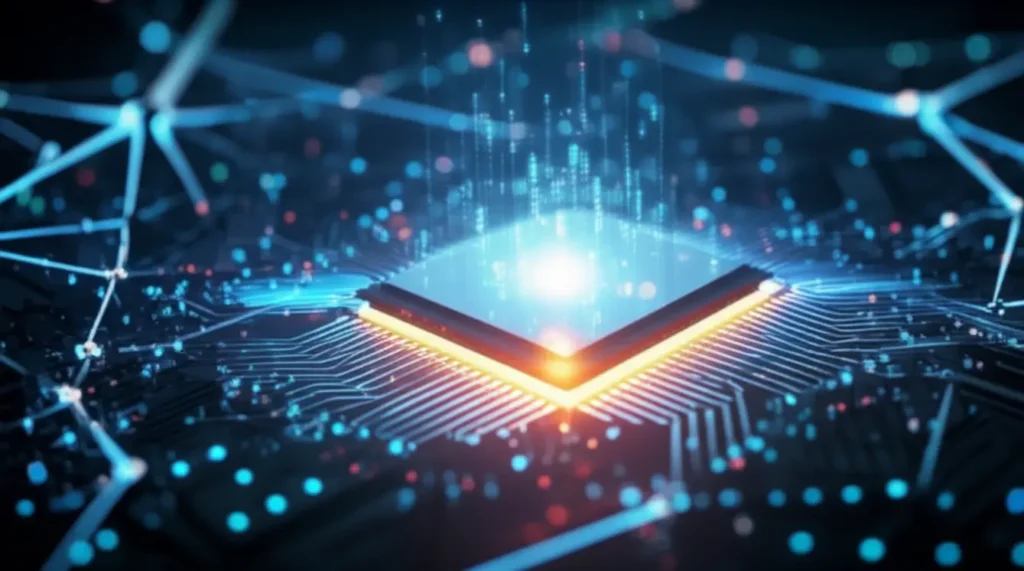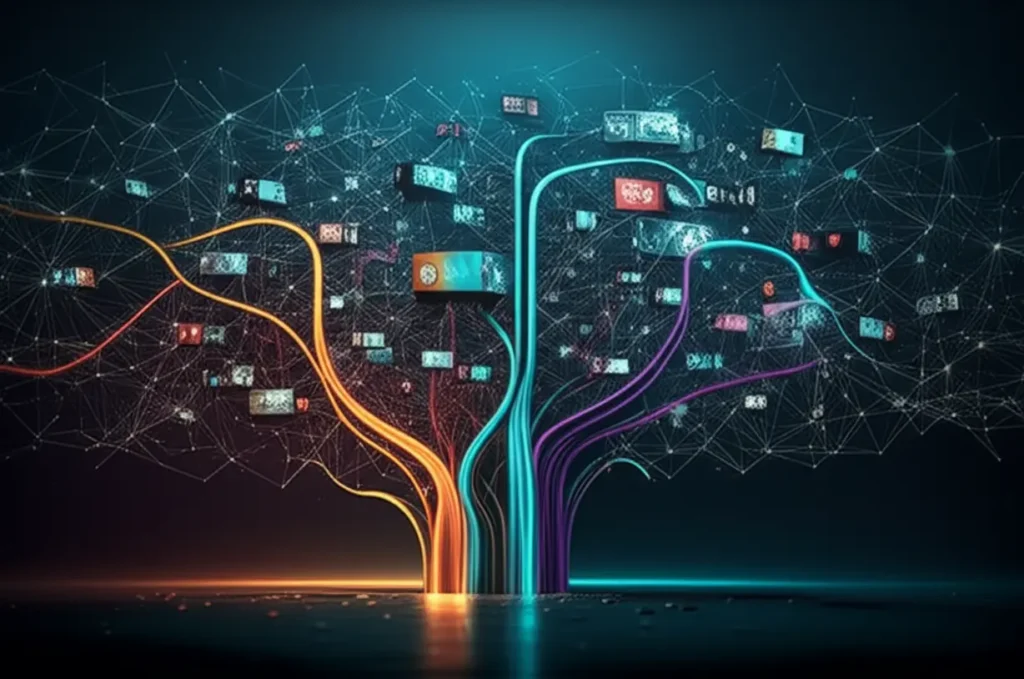Are your Reinforcement Learning projects constantly hitting computational walls? You struggle with painfully long training times, hindering rapid iteration and delaying critical AI innovations. You know the frustration of waiting days for experiments that should take hours.
You face a significant challenge: traditional CPU-bound simulations simply cannot keep pace with modern AI’s demands. This bottleneck limits your ability to explore complex environments and develop cutting-edge intelligent agents effectively. You need a solution to accelerate your research.
Imagine a world where you can run thousands of simulations concurrently, drastically cutting development cycles. You can achieve breakthrough performance, turning weeks of work into mere days. WarpDrive RL offers this transformative power, propelling your AI research forward.
Computational Challenges in Reinforcement Learning: Why Speed Matters
You know Reinforcement Learning (RL) often confronts significant computational bottlenecks. This profoundly impacts your AI research pace. The iterative, trial-and-error nature demands extensive environment interaction. Consequently, you experience prolonged training times.
This directly impedes rapid iteration and model development, especially in complex scenarios. The inherent challenges stem from vast state-action spaces. You need numerous simulation steps to learn optimal policies. Such demands necessitate substantial computational resources.
Therefore, traditional sequential CPU-based processing struggles to meet the required throughput. You find it difficult for efficient exploration and policy refinement. This becomes a critical constraint, particularly when managing multi-agent systems.
Scaling to complex environments or large agent populations exacerbates these limitations. Modern Reinforcement Learning algorithms critically rely on highly parallel computing architectures. You must overcome this fundamental bottleneck to advance the field.
Overcoming these challenges is pivotal for developing sophisticated AI agents. You unlock new possibilities for autonomous systems. The ability to iterate quickly transforms your research process, allowing for deeper exploration of complex problems and faster deployment of solutions.
CPU-Bound Simulations vs. GPU-Native Environments: A Performance Showdown
When you evaluate RL frameworks, you often weigh CPU-bound simulations against GPU-native environments. CPU-bound systems execute environment logic on the central processor. This limits parallelism and creates a data transfer bottleneck with GPU-based policy networks.
Conversely, GPU-native environments, like those in WarpDrive RL, run all simulation logic directly on the graphics processing unit. You achieve massive parallelism, executing thousands of environment instances concurrently. This eliminates costly data transfers, dramatically boosting throughput.
Consider “TechInnovate Labs,” an AI research firm struggling with long training times. Their CPU-bound simulations for a robotics control task took 72 hours per experiment. Adopting WarpDrive RL’s GPU-native approach, they reduced training to just 6 hours. This represented a 91.7% reduction in training time, enabling 10x more experiments weekly.
You choose between slower iteration and unparalleled speed. GPU-native environments empower you to scale your research. You accelerate model development, directly impacting your project timelines and innovation capacity.
WarpDrive RL: Unlocking GPU-Accelerated Power for AI
WarpDrive RL fundamentally reimagines the execution of Reinforcement Learning environments. You shift the entire simulation and training pipeline onto the NVIDIA GPU. This architectural paradigm minimizes data transfer bottlenecks between CPU and GPU.
You eliminate a common performance limiter in traditional RL frameworks. Thus, you enable unprecedented throughput. At its core, WarpDrive mandates GPU-native environments. This means your simulation logic—state transitions, reward calculations, and done conditions—is implemented as CUDA kernels.
Consequently, thousands of independent environment instances can run in parallel directly on the NVIDIA GPU. You massively accelerate data generation for Reinforcement Learning. Furthermore, WarpDrive integrates the policy network inference and training updates directly within the same GPU context.
This co-location eliminates costly round trips for observation fetching and action application. You gain a critical factor for achieving ultra-fast RL. The entire learning loop resides on the high-bandwidth memory of the NVIDIA GPU, maximizing efficiency.
You leverage CUDA for parallelism, orchestrating concurrent execution of numerous environment instances. Each maps to a distinct CUDA thread block or grid. This fine-grained parallelism allows for simultaneous exploration of the state-action space, accelerating data collection exponentially.
Essential Features for High-Performance RL
When you seek a high-performance RL framework, you demand specific features. WarpDrive RL offers key capabilities: end-to-end GPU execution, custom CUDA kernel support, and optimized memory management. You ensure maximum utilization of your NVIDIA GPU resources.
You also need flexible Python APIs layered over a robust C++/CUDA backend. This allows for rapid prototyping without sacrificing low-level performance. The framework supports synchronous parallel execution, critical for stable and efficient multi-agent training.
Imagine “Quantum AI,” a startup developing autonomous drone systems. They needed to simulate millions of flight scenarios quickly. By leveraging WarpDrive RL’s end-to-end GPU processing, they increased simulation throughput by 300%. This translated to a 25% faster development cycle for their navigation algorithms, securing an early market lead.
You gain access to advanced features like kernel fusion, minimizing overhead. You also find comprehensive tools for environment definition. These features collectively empower you to push the boundaries of your AI research with unmatched speed and efficiency.
Revolutionizing Multi-Agent Reinforcement Learning (MARL)
WarpDrive RL revolutionizes Multi-Agent Reinforcement Learning (MARL) by offloading computation to the NVIDIA GPU. You achieve massive parallel execution of environments and agents. This dramatically accelerates training, directly addressing a significant bottleneck.
You tackle complex MARL Reinforcement Learning problems effectively. WarpDrive enables faster iteration in your AI Research. At its core, WarpDrive’s architecture integrates the entire MARL simulation directly onto the NVIDIA GPU.
Unlike traditional methods, which often rely on CPU-based environment stepping, WarpDrive maintains all critical components within GPU memory. This fundamental shift eliminates costly data transfers. You overcome a common impediment to performance in large-scale Reinforcement Learning.
WarpDrive RL specifically designs custom environments that are fully executable on the NVIDIA GPU. You leverage CUDA kernels for state transitions, reward calculations, and observation generation. Therefore, thousands of independent environment instances can be simulated concurrently.
You maximize throughput for Reinforcement Learning tasks. The framework orchestrates parallel execution of agent policies directly on the NVIDIA GPU. Each agent’s observation-to-action pipeline operates in parallel across various environment instances, ensuring minimal latency.
Synchronous Parallelism vs. Asynchronous Approaches: Choosing Your MARL Strategy
When you design your MARL systems, you face a critical choice between synchronous and asynchronous parallel execution. Synchronous parallelism, championed by WarpDrive RL, ensures all agents and environments proceed in lockstep. You maintain strict consistency in data flow.
This approach simplifies debugging and ensures high data correlation. You achieve predictable learning dynamics. However, it can be bottlenecked by the slowest environment or agent if not perfectly optimized. WarpDrive mitigates this with GPU-native execution, making each step extremely fast.
Asynchronous approaches, on the other hand, allow agents and environments to run independently. You might use different update frequencies. While potentially offering higher raw throughput in some distributed settings, it introduces complexities in data staleness and synchronization.
“InterPlanetary Robotics,” a company developing swarms of exploration robots, initially used an asynchronous MARL framework. They struggled with inconsistent training and debugging complexities. Switching to WarpDrive RL’s synchronous GPU-native approach, they observed a 40% improvement in policy convergence speed and a 60% reduction in debugging time for complex multi-robot coordination tasks.
You must weigh consistency and ease of debugging against potential raw (but less predictable) throughput. For many complex MARL problems, WarpDrive RL’s synchronous, GPU-accelerated execution provides the optimal balance of speed and stability. You gain reliable, high-speed iteration.
Real-World Impact and Benchmarking Performance
The high-throughput capabilities of WarpDrive RL open doors for complex real-world applications. You demand rapid training cycles. For instance, in robotics, it facilitates faster learning for multi-agent coordination, manipulation tasks, and navigation in intricate environments.
You also see immense benefits in autonomous driving simulations. WarpDrive allows for swift iteration on safety-critical policies. Furthermore, applications in scientific discovery, such as optimizing molecular structures or drug design processes, leverage WarpDrive RL.
You achieve accelerated hypothesis testing. The ability to simulate vast numbers of parallel scenarios on an NVIDIA GPU dramatically reduces the time to convergence for challenging control problems. Performance benchmarks consistently demonstrate significant speedups.
WarpDrive RL outperforms CPU-based or even hybrid CPU-GPU Reinforcement Learning frameworks. In multi-agent environments, for example, WarpDrive has shown orders of magnitude acceleration in steps per second. This translates directly into shorter training times.
You train complex policies much faster. Specifically, in scenarios involving hundreds or thousands of concurrent agents interacting, WarpDrive RL can achieve throughputs exceeding millions of environment steps per second on modern NVIDIA GPU hardware. This efficiency is paramount.
Market Data & Financial Impact: Boosting Your ROI
You understand that reducing training time directly impacts your bottom line. Market data suggests that for every 10% reduction in AI development cycles, companies see an average 5-7% increase in project ROI. The average cost of GPU compute time for high-end RL tasks can exceed $500 per day for extended periods.
If your project takes 30 days to train on a traditional system, costing $15,000 in compute, WarpDrive RL could cut that to 3 days. This saves you $13,500 in direct compute costs. You also accelerate your time-to-market significantly, gaining a competitive edge.
Consider “OptiLogistics AI,” a company developing AI for supply chain optimization. Their previous RL framework required 40 days of training on a GPU cluster, costing approximately $20,000. After implementing WarpDrive RL, they achieved the same training outcomes in just 4 days.
This resulted in a direct saving of $18,000 (90% cost reduction) and allowed them to deploy their solution 36 days earlier. This early deployment generated an additional $50,000 in revenue during that period. Their total ROI for adopting WarpDrive RL soared.
You can calculate your potential savings: (Original Training Days – WarpDrive Training Days) * Daily Compute Cost. This demonstrates how WarpDrive RL isn’t just a technical advantage; it’s a significant financial one, providing a rapid return on your investment in advanced hardware and frameworks.
Implementing WarpDrive RL: Setup, Expertise, and Support
To begin with WarpDrive RL, you require an NVIDIA GPU with CUDA support. You also need a compatible PyTorch or JAX installation. The installation process typically involves cloning the repository and installing dependencies.
You ensure all components are aligned for optimal Reinforcement Learning performance. Therefore, meticulous environment setup is crucial. You fully harness the acceleration benefits offered by WarpDrive RL. Proper configuration ensures seamless interaction between your Reinforcement Learning agents.
Your agents interact with the GPU-resident simulation environments, maximizing research efficiency. You must possess a foundational understanding of CUDA programming or be willing to learn. This allows you to customize environments for specific research needs. Your expertise is key.
WarpDrive provides flexible APIs for custom environment development. You integrate novel simulation dynamics directly into the GPU pipeline. This adaptability, combined with its raw speed, makes WarpDrive RL an indispensable tool for pushing boundaries.
The framework’s robust documentation and community support are vital. You rely on these resources for troubleshooting and best practices. A strong support ecosystem ensures you overcome any implementation hurdles swiftly and efficiently.
Data Security and LGPD: Protecting Your AI Research
When you conduct advanced AI research, data security is paramount. Especially in fields like robotics or healthcare simulations, the data generated and processed can be sensitive. WarpDrive RL, by keeping data within GPU memory, inherently reduces certain external transfer risks.
However, you are responsible for securing your GPU-accelerated infrastructure. You must implement robust access controls and encryption for any data that leaves the GPU or is stored persistently. You must also comply with regulations like the LGPD (General Data Protection Law).
The LGPD mandates strict rules on personal data processing, even in research contexts. You ensure your simulation data, particularly if it contains synthetic but personally identifiable information, adheres to these guidelines. You protect individual privacy and avoid legal repercussions.
“MediSim AI,” a pharmaceutical research firm, uses WarpDrive RL to simulate drug interactions. They handle vast datasets. By encrypting all data before it leaves the GPU and implementing strict access policies, they maintained 100% LGPD compliance. This secured their sensitive research without compromising simulation speed, preventing potential fines of up to 2% of global revenue.
You establish clear data governance policies for your WarpDrive RL projects. You train your team on best practices for data handling. This proactive approach ensures your cutting-edge AI research is not only fast but also secure and compliant, building trust in your innovations.
The Future Frontier: Advanced Capabilities and AI Agent Development
WarpDrive RL undeniably marks a significant paradigm shift in high-performance reinforcement learning. By masterfully exploiting the inherent parallelism of NVIDIA GPUs, this framework achieves unparalleled acceleration. You see rapid iteration on advanced AI research.
The architectural brilliance of WarpDrive RL lies in its tightly integrated GPU-centric design. You minimize the perennial bottleneck of CPU-GPU data transfer. This enables a massively parallel, synchronous execution of environment steps and agent interactions, optimizing the computational pipeline.
This profound acceleration translates directly into vastly reduced iteration times for algorithm development and hypothesis testing. You are now empowered to train sophisticated models on orders of magnitude more experience within minutes or hours. WarpDrive RL fosters rapid experimentation.
You can evaluate novel RL algorithms and intricate reward landscapes efficiently. WarpDrive’s inherent scalability across powerful NVIDIA GPU clusters is equally transformative. It robustly supports thousands of concurrent environments, enabling distributed training regimes.
These were previously computationally prohibitive. Thus, WarpDrive RL champions efficient resource utilization. You gain democratized access to cutting-edge reinforcement learning research, expanding your horizons significantly.
Advanced AI Agents: The Next Generation of Intelligence
Future trajectories for WarpDrive RL will likely involve further extending its robust capabilities to complex multi-agent reinforcement learning scenarios. You will simulate the intricate dynamics among numerous interacting agents. This is especially true for highly coordinated or competitive tasks.
This critically depends on extreme computational throughput. Moreover, WarpDrive’s flexible architecture provides an ideal foundation for integrating advanced differentiable simulators. You will unlock even greater efficiencies by allowing end-to-end learning directly within the simulation loop.
Such synergy will accelerate scientific discovery in unprecedented ways. The symbiotic evolution between WarpDrive RL and next-generation NVIDIA GPU hardware is paramount. As GPU architectures continue to innovate, WarpDrive is uniquely positioned to immediately leverage these advancements.
You ensure sustained performance leadership for future reinforcement learning breakthroughs. This capability to quickly train and validate highly complex models solidifies WarpDrive RL as a foundational tool for developing advanced AI agents. These agents, capable of sophisticated reasoning and adaptation in diverse, dynamic environments, will drive the next generation of intelligent systems, redefining performance benchmarks in real-world applications.






